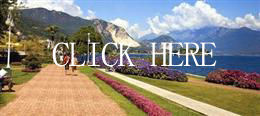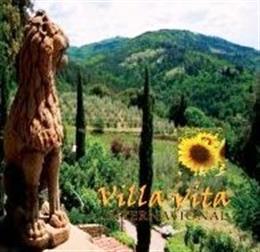SEARCH THIS BLOG
Thursday, March 27, 2014
Another Day ... Another Cheese Tasting ...
Another day .. another cheese tasting ... (yawnnnn).
Just kidding of course! This was a great one! We accompanied some restaurant owners to Luigi Guffanti Cheese Producers, in nearby Arona, for a cheese tasting event open to restaurants, shops, and other distributors of their products. On an unassuming street, in a nondescript building, distinguishable today only by the large balloon inflated outside to draw attention to the event, a large group of people were gathered inside for a tour of the cheese cantina, to be followed by a buffet tasting.
Here are some of the highlights:
You would never know that underground, below this parking terrace, is a gigantic cantina filled with thousands of cheeses. This is the entrance to Luigi Guffanti. Inside those doors there is a retail shop to the right, and the rest is offices and business space. Following through to a stone staircase, we descended into the cheese cantina.
Luigi Guffanti, Formaggi per Tradizione da 1876, is what their business cards say. I'm not sure how many generations into the family the man below is, but he is the current patriach and current Luigi of this proud family dynasty. It was he who proudly showed us around the cantina. Read on; there's a lot of interesting information here:
( Continued ... )
One of the first things we learned was a little history of cheese, and what is believed to be how it was "discovered". What you see below is a very old, dried-out cow stomach. More specifically, it is the fourth stomach of the cow, as they have several in their digestive system. Apparently, thousands of years ago, when ancient nomadic people were searching for a place and way to keep milk fresh as they traveled, they discovered that storing it in this fourth stomach, like in a sack, kept the milk from spoiling. In fact, they discovered that after some time the milk transformed into something else, thicker, harder, but edible and safe, and delicious. This was because of the natural enxymes present in that fourth stomach, the same as those present in the rennet, or curds, that are used to make cheese today. And so, cheese was discovered. Further, they discovered that cheese kept stored in this stomach-sack never spoiled. Never.
Now let's jump back to present day and the Luigi Guffanti cantina and some more pleasing-looking things.
There are large provolone (above) hanging from racks. And the rows of beautiful, parmigiano reggiano wheels...
At this point Luigi was explaining that all basic cheeses are made of only three ingredients: milk, rennet, and salt. It was a great skill, to know how to make cheese, and infinitely important in ancient communities, as properly made cheese, never spoiling, could sustain a community through long travels or periods without other foods. In these ancient tribes, thousands of years ago, therefore, the cheese maker was so important that later on in history rulers and emperors took their titles, that we know as "Kaiser", or "Cesare", from the older Latin word for the cheese maker.
Eventually, the combination of those three ingredients, plus a knowledge of temperature, storage, what type of milk was used, etc., led to the refining of cheeses into the different varieties we have today. Just these elements, not including added flavors or other ingredients, today is accountable for more than 200 kinds of cheese in Italy alone.
The cheeses here are not wrapped with anything outside of their own rinds; the cheese forms its rind naturally as it dries, and the rind of all cheeses is edible. There are a very few exceptions to this rule, such as Taleggio, in which case the rinds are shaved down thin, and because of this manipulation the cheese rinds are considered unclean and unsafe to eat. Obviously, much man-handling of cheeses will make rinds dirty and perhaps unappetizing, but technically speaking, rinds are edible.
Today, the refinement of different types of cheese includes many particularities. Some cheese, such as these pecorino (sheep) cheeses from Tuscany, above, are stored for some time in ashes, which infuses them with a smoky, unique flavor. And this cheese, below, is infused with zafferano (safran) flavor and pieces.
While these hanging balls of cheese, below, have a balsalmic flavor. But the important thing to remember, again, is that all these rinds are simply the dried cheese, all these rinds are edible, and all of them never spoil. As long as cheese is safe within its rind, both cheese inside and rind will be edible.
The cantina itself, unsurprisingly, was gorgeous. Classic, arched brick ceilings held up with old wooden beams.
These cheese wheels, below, are special commemorative wheels of cheese. Stamped with a name and year, they mark a birth, baptism, or other special occasion.
Rows and rows of cheese. These blocks in the foreground are Salva Cremasco, made from fully skimmed milk and ripened for up to one year.
Here's another interesting thing: These are square blocks of quartzite, piled into this alcove above a water source flowing through via a pump. The quartz's natural properties maintains the proper humidity levels in the cantina. But this functions properly only when other elements, such as warm human beings for example, are not added into the environment. Luigi explained that after our group would leave the cantina, the floor would be deliberately flooded, covered with a couple centimeters of water, to forcibly correct the humidity level.
Now remember how Luigi said cheese never spoils? To prove this, he brought us to a shelf containing rows of cheeses looking like the photo below. These are forgotten cheeses. They have been on these shelves a long, long, long time. And they look it. But, as stated before, the cheese is still edible. We know, as we got to try some pieces of it.
Below, Luigi shaves some small pieces from the inside of one of those very old cheeses. The cheese is almost like a stone, quite hard and dense, and it took much effort for him to shave slivers from it.
We tasted two types of Robiola, that you can see below the slicer. The cheese was dry and had a very concentrated taste, with a strong aftertaste, not unlike a finish with wine. But, it didn't taste bad. Not at all.
Okay, so enough of very old cheeses. It was then time to go upstairs, to a dedicated banquet room, where a marvelous display of cheeses, meats and wines was awaiting us. These cheeses, prepared for us into cubes and labeled, were each at the peak of their freshness.

The same for the meats. And as if that were not enough, a risotto was soon served, made, naturally with cheeses. As for the wine, bottle after bottle after bottle was opened. There was, additionally, an artisan beer table, and, why not, we tried some of those as well. And of course, there was Champagne and Prosecco.
Enough Champagne, Prosecco, wine, and beer to be able to facilitate some interesting discussions as to what is going on in this strange painting of Arona that hung on the wall over the table.
Car people, you can easily drive to Luigi Guffanti in Arona to visit the shop. In addition, for a small fee per person, they will arrange a viewing of the cantina for you, with a tasting of a few cheeses. Contact them with the information below, or take a look at their website for more information and an email contact page.
And for those of you without cars, their website is a font of information about local cheeses. Use the information to buy cheeses where you are able to and make your own cheese tasting; perhaps you'll even find some Guffanti ones in your local shop too.
Luigi Guffanti, Formaggi per Tradizione
via Milano, 140
28041 Arona
Tel: +39 347 0421203
Follow On Facebook For More Posts
SOME IMPORTANT DATES
Visit The Stresa Tourist Office For Complete Event Schedules
STRESA SIGHTS by DANA KAPLAN
READERS' QUESTIONS
- Where can I buy foreign newspapers in Stresa?
- Where can I eat breakfast in Stresa?
- Where are the public restrooms in Stresa?
- Can I rent a wheelchair in Stresa?
- Should I buy train tickets in advance?
- Are there any day tours to Switzerland from Stresa?
- How can I arrange a civil wedding in Stresa?
- How bad are the summer bugs in Stresa?
- Do I Need A Car In Stresa?
- Is there an Internet cafe in Stresa?
- Is it too isolated staying at an Isola dei Pescatori hotel?
IMPORTANT POSTS AND LINKS
- Top Ten Things to See in Stresa
- Swimming, Hiking, Outdoor Activities
- Weather
- Important Train Information
- Alibus Shuttle From Malpensa to Stresa
- Driving Directions From Malpensa - With Photos
- If You Have Only One Day in Stresa
- Parking a Car in Stresa
- Train Service from Malpensa to Stresa and Milano
- Supermarkets, Food Shops, and Fast Food
- Laundromats
- Linate Airport to Stresa Directions
- Milan Tram System Map and Transport
- Bus Schedule
- Stresa Boat Imbarcadero
- Stresa to Mottarone Cableway
- Boat Schedule - English
- PosteItaliane - Postal service
- Trenitalia Site and Schedule -- English
- Winter Trip to Stresa? Start Planning Here
READ ABOUT...
- art and culture
- books
- churches
- day trips
- events
- food
- for kids
- FYI
- gardens
- history
- interviews
- just for fun
- learning italian
- letters from readers
- letters from the editor
- milan
- museums
- music
- nature
- news and information
- outdoor activities
- photo gallery
- Piemonte
- places to go
- places to go and day trips
- places to stay
- rainy day activities
- restaurants
- risotto
- shopping
- spring
- stresa
- summer
- things to do
- tours
- transportation
- videos
- walks
- wine
- winter




.jpg)
.jpg)

























